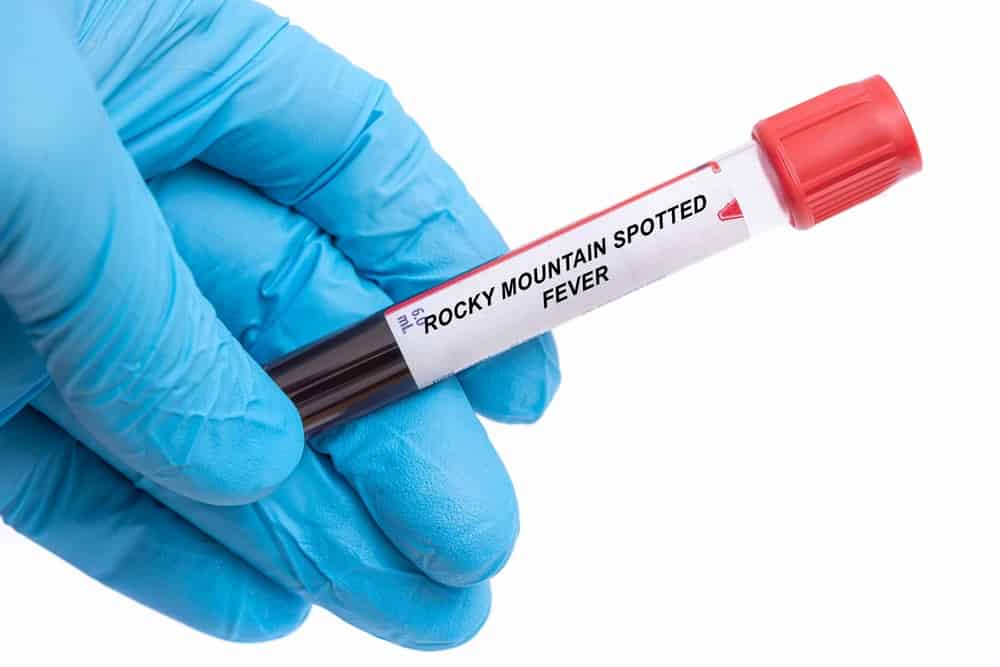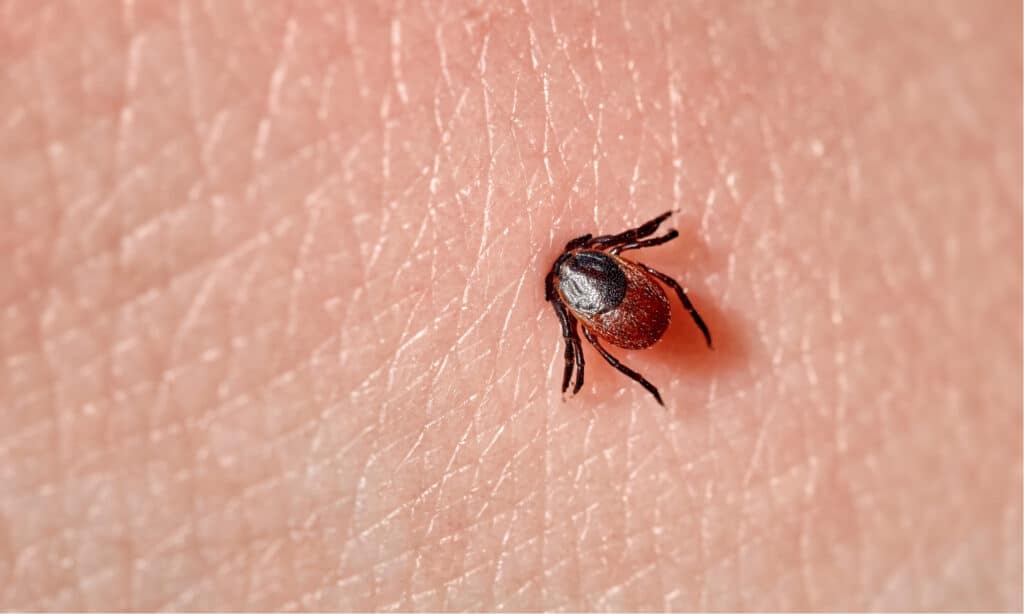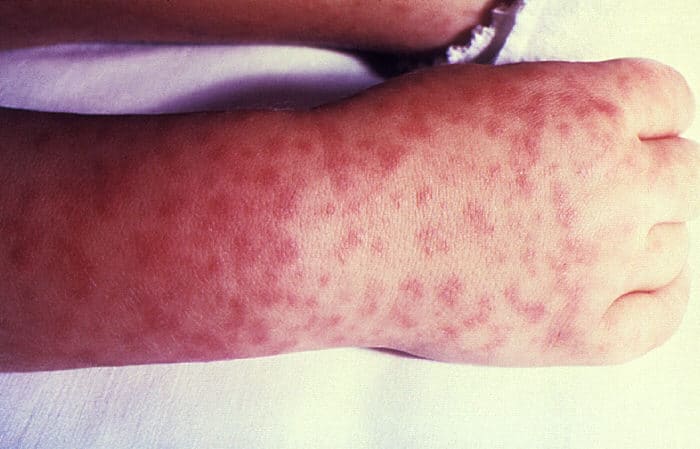Being out in nature is one of the great enjoyments of life. There is nothing like spending a day fishing in the lake or hiking through the forest on a warm summer day. But any time we go outside and commune with our natural environment, we expose ourselves to wildlife, which comes in many forms. It’s often not the bear we need to worry about but the creatures we don’t see. What is Rocky Mountain spotted fever, and how do you get it? Find out now, including the symptoms, treatment, and prognosis.
What is Rocky Mountain Spotted Fever

Rocky Mountain spotted fever is caused by the
Rickettsia rickettsiibacteria. Fever and headache are the most common early symptoms.
©luchschenF/Shutterstock.com
Rocky Mountain spotted fever (RMSF) is a deadly bacterial disease. It spreads through ticks that are infected. The Rickettsia rickettsii bacteria, the most severe rickettsii infection in North America, causes the illness. Fever and headache are the most common early symptoms. Other symptoms include nausea, vomiting, stomach pain, muscle pain, and lack of appetite.
A rash is common with RMSF and typically develops two to four days after the fever starts. The rash can vary in size and appearance, with some looking like small spots and others like large splotches. This infection can be difficult to diagnose early because the rash does not develop until later, and the symptoms mimic many other diseases.
How Do You Get RMSF?
Infected ticks spread the bacteria when they bite you. Transmission is rapid after a bite, with the bacteria quickly entering human endothelial cells. People frequently exposed to dogs or wooded areas with tall grass and brush are more likely to encounter ticks.
The best way to prevent tick bites is to stay on cleared hiking trails and wear long sleeves, pants, and enclosed shoes. You can also treat your clothes and gear with permethrin.
Is Rocky Mountain Fever the Same as Lyme Disease?
While they are both infections you can get from tick bites, RMSF and Lyme disease are different illnesses. Different bacterium cause them and they have dissimilar symptoms. Both can produce fever, headache, and fatigue, but Lyme disease has a bulls-eye-looking rash that appears earlier than the Rocky Mountain rash.

Infected ticks spread the bacteria when they bite you. Transmission is rapid after being bitten, with the bacteria quickly entering human cells.
©Evgeniyqw/Shutterstock.com
Is RMSF Contagious?
Rocky Mountain spotted fever is not contagious and does not spread from person to person. The only way you can get RMSF is through the bite of an infected tick or by contamination of the skin with tick blood and feces.
What Ticks Transmit Rocky Mountain Spotted Fever?
The American dog tick spread RMSF in the Western, Eastern, and Central United States. The brown dog tick spreads the bacteria in the Southwestern US and along the Mexico border, and the Rocky Mountain wood tick spreads the disease in the Midwest near the Rocky Mountains.
Treatment Options and Long-term Prognosis of RMSF
If left untreated, the bacteria can cause damage to blood vessels throughout the body, causing organ and tissue damage and even death. Victims need immediate medical attention. Doctors will perform a blood test but may start you on a round of antibiotics if they suspect RMSF. Doxycycline is the primary antibiotic for RMSF patients as it is the most effective. The patient should take it as soon as possible to prevent serious illness and death. The mortality rate is three to five percent with early treatment.

A rash is common with RMSF and typically develops two to four days after the fever starts. The rash can vary in size.
Does Rocky Mountain Spotted Fever Ever Go Away?
This “fever” can be fatal in as little as eight to 12 days after a bite. Untreated cases have a 13 to 25% mortality rate. If someone survives, they may have permanent damage, such as nerve damage, gangrene, incontinence, partial paralysis, and hearing loss.
Note: AZ Animals does not attempt to give medical advice. If you suspect you (or someone you know) have Rocky Mountain spotted fever, seek medical attention immediately.
The photo featured at the top of this post is © Steve Heap/Shutterstock.com
Thank you for reading! Have some feedback for us? Contact the AZ Animals editorial team.







